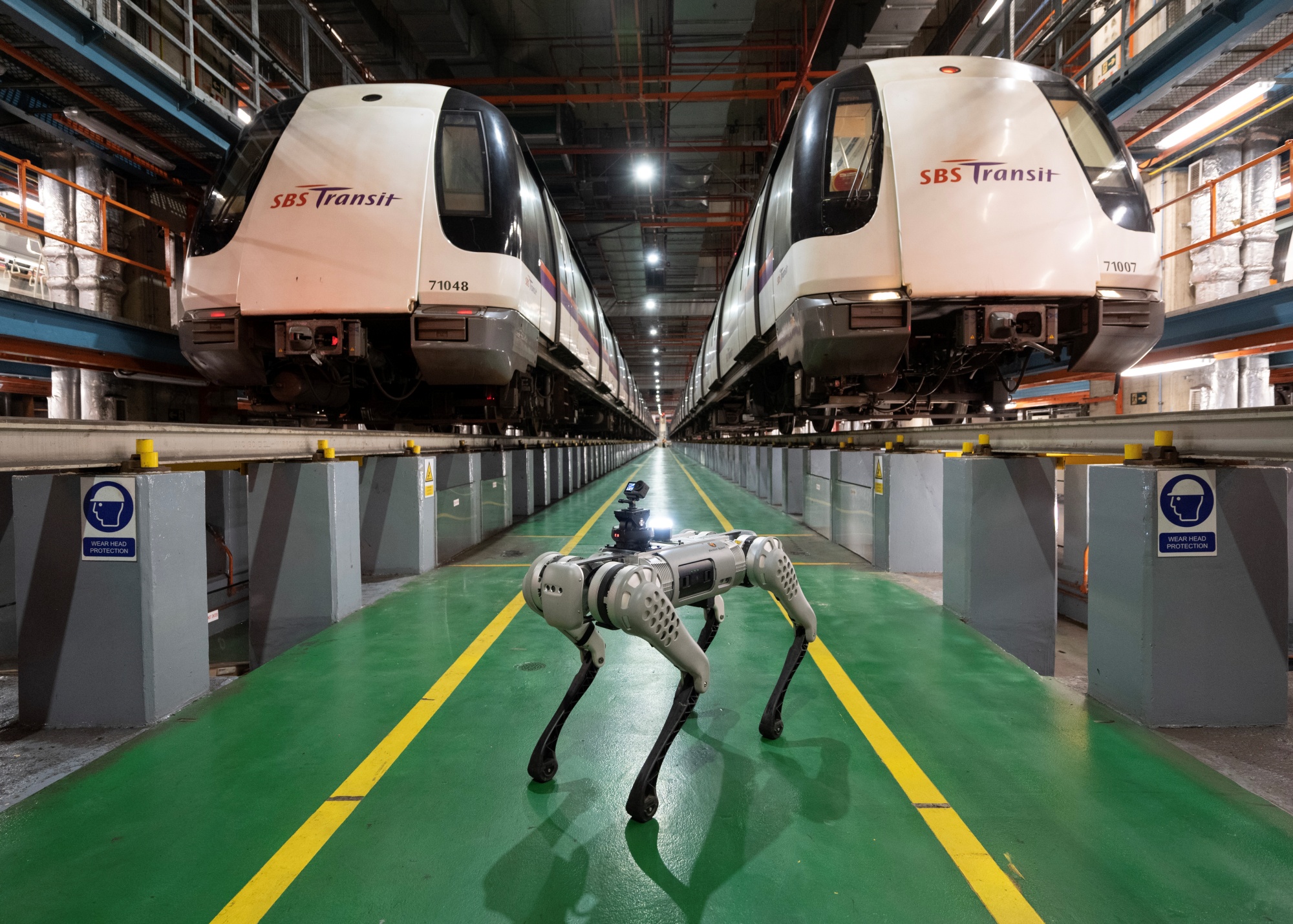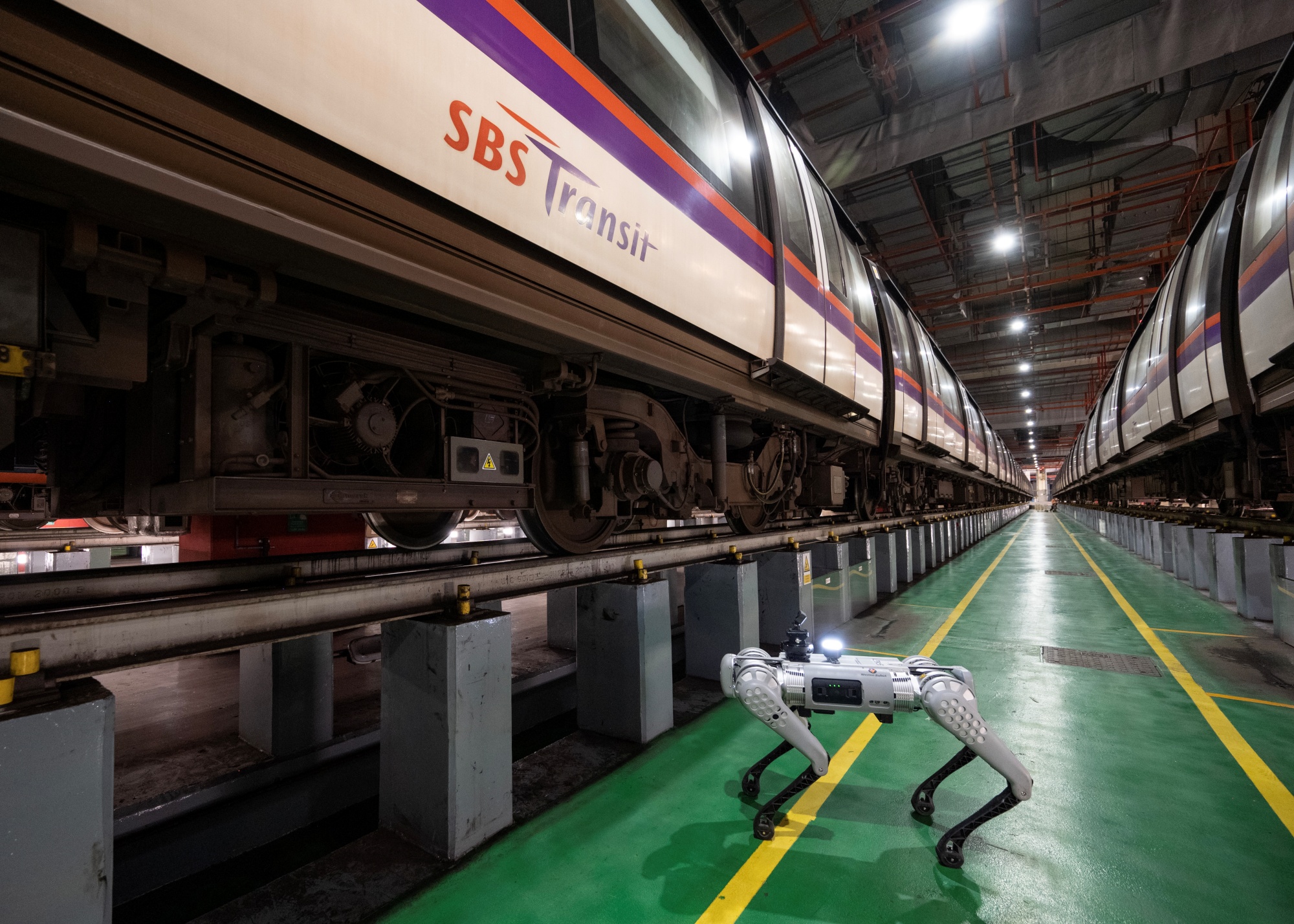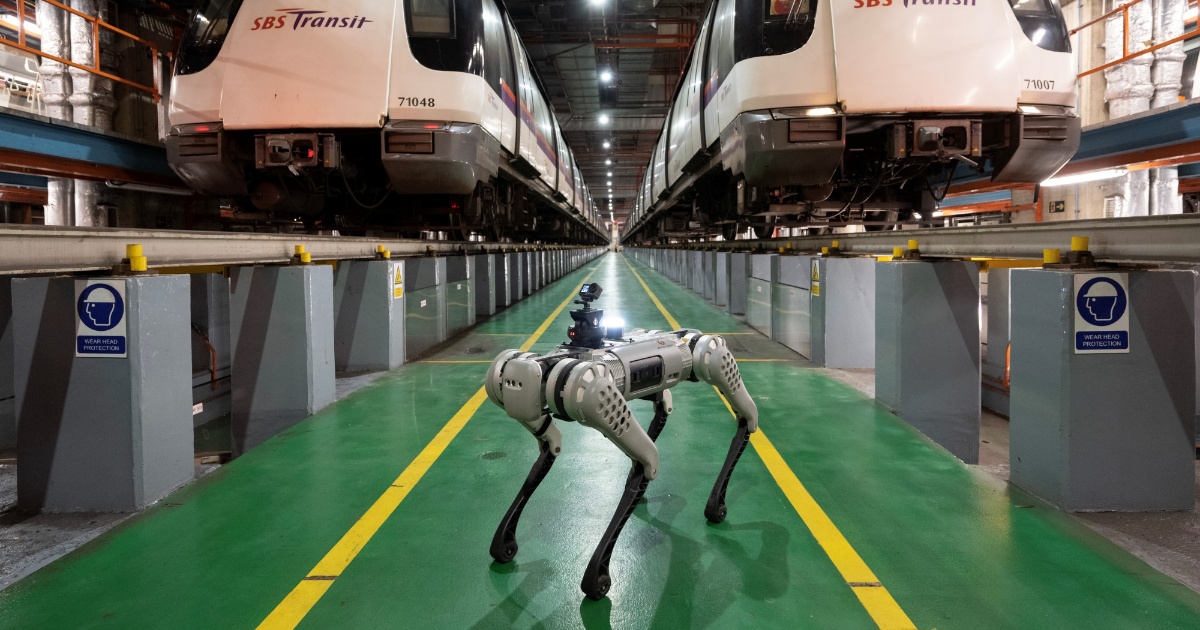Follow us on Telegram for the latest updates: https://t.me/mothership sg
SBS Transit's latest "hire" has four legs and doesn't need to take breaks .
kAI is an autonomous AI-enabled robotic dog that will conduct train inspections at the North East Line depot, SBS Transit announced today (May 24).
 Credit: SBS Transit
Credit: SBS Transit
 Credit: SBS Transit
Credit: SBS Transit
Faster and more effective inspections
Aside from its multiple limbs that allow it to navigate uneven surfaces and stairs in the depot smoothly, kAI is equipped with a camera and sensors to inspect trains.
kAI is able to conduct visual inspection of a train within an hour, which is half the time taken when technicians do manual inspections. This frees them to take on higher value-add roles and maintenance tasks, said SBS Transit.
Here's a video of kAI in action:
The robotic dog can also detect anomalies that may not be visible to the naked eye, thus ensuring that inspections are conducted more effectively and accurately.
The public transport operator said:
"With early detection of anomalies through kAI, any issues or defects can be preemptively rectified before they develop into major problems and potentially disrupt train operations, thus saving on cost, manpower and resources."
Part of transformative rail projects
The robotic dog is one of three transformative rail projects that the operator announced today.
The other two are:
- an artificial intelligence software algorithm called the Optimised Timetable Energy Savings (OTES). This algorithm can programme train frequencies, allowing one train to arrive at the MRT station at the precise moment that another train departs
- the ability to 3D-print selected train parts locally upon demand
Jointly developed by SBS Transit and Alstom, these rail projects are a first for Singapore's MRT networks.
The Optimised Timetable Energy Savings allows SBS Transit to harness the kinetic energy generated from the braking of a decelerating train to power an accelerating train. This reduces the overall energy consumption of the accelerating train.
On the other hand, 3D-printing train parts on demand allows the operator to avoid the need to carry a huge volume of inventory, hence, saving on warehousing cost.
"It also dispenses with the need to import spare parts through long-distance air or sea freight, thereby reducing carbon emissions. Raw materials wastage incurred from traditional manufacturing processes is also eliminated," said SBS Transit.
All three projects will be implemented on the North East Line by the first quarter of 2024.
All images courtesy of SBS Transit.
If you like what you read, follow us on Facebook, Instagram, Twitter and Telegram to get the latest updates.

